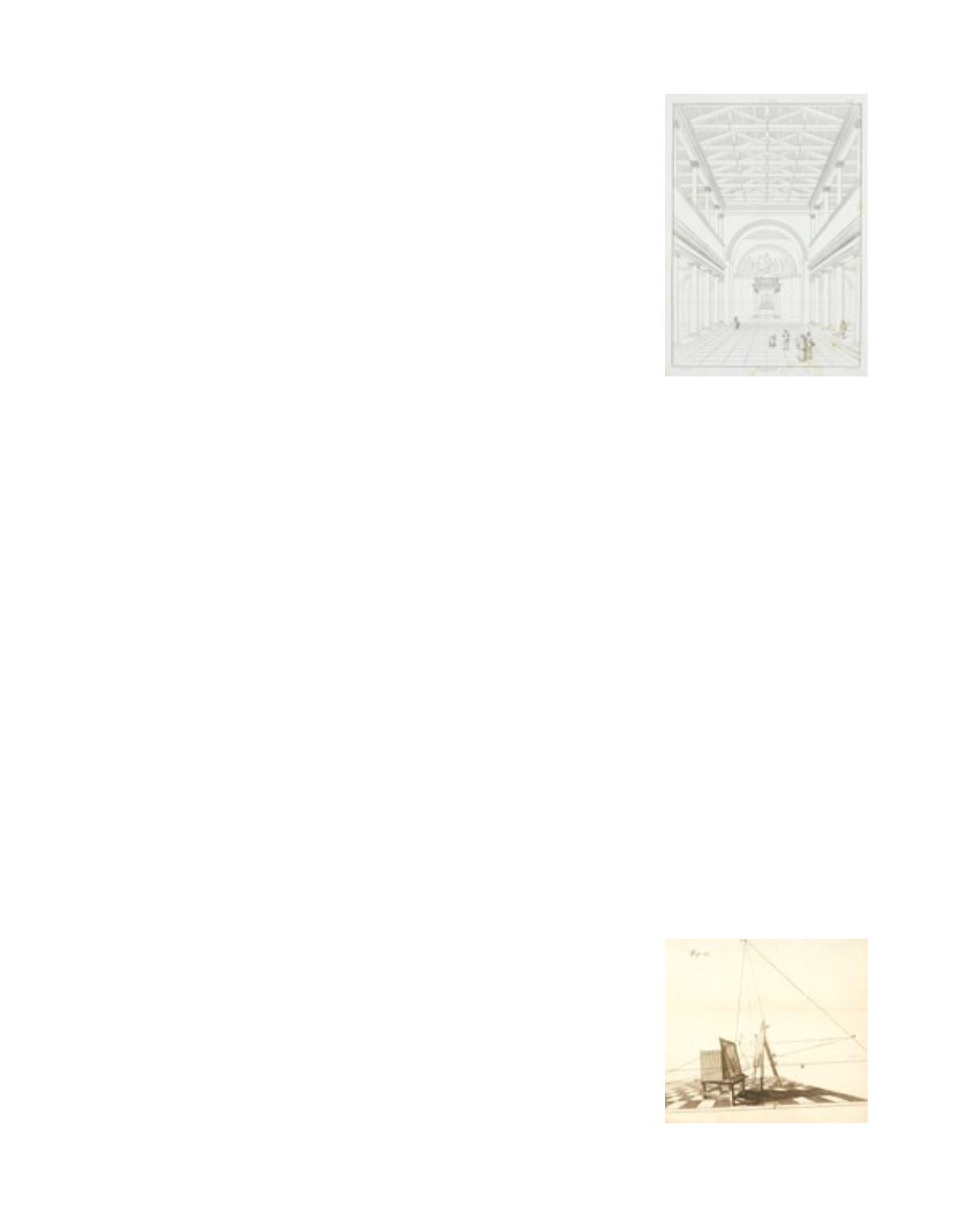

203
Vagnetti, FIb85 (« notevole per la bellezza fuori del commune delle sue tavole incise »).
Édition originale de ce manuel de perspective richement illustré. Débutant par une courte histoire
de la perspective, l’ouvrage traite en 20 chapitres de la perspective classique pour terminer avec un
chapitre sur la perspective linéaire. Manuel pratique, les problèmes sont richement illustrés par de
belles planches gravées.
Rousseurs, usures à la reliure.
Provenance : Ch. Neirynck (nom en lettres dorées sur la reliure).
First edition of this richly illustrated course on perspective, taught according to a new and easy theory,
preceded by a historical introduction. The work is of considerable importance for its finely engraved plates.
348
TAYLOR, Brook.
Linear Pespective : or, a new method of representing justly all manner of objects
as they appear to the eye in all situations. Work necessary for painters, architects, &c.
Londres, R.
Knaplock, 1715.
In-8 (198 x 119 mm) de 2
ff.n.ch., 42 pp., 1 f.n.ch. (catalogue de libraire), grande
vignette gravée au début du texte, 18 planches gravées.
[Relié avec :]
IDEM.
New Principles of linear perspective : or the art of designing on a plane the representations of all
sorts of objects.
Londres, R. Knaplock, 1719.
In-8 de XIV, 70 pp., 13 planches gravées ornées de 25 figures ;
veau brun, double filet doré en encadrement des plats, tranches mouchetées
(reliure anglaise de l’époque).
200 / 400
€
Voir Millard, British, 35 (note dans l’article sur Kirby) et 43 (note sur Malton) ; Vitry, 787.
Éditions originales.
L’un des premiers ouvrages anglais sur la perspective. Grand succès en librairie il fut réédité trois fois
et traduit en plusieurs langues.
“
Brook Taylor (1695-1731) was a brilliant mathematician whose principal achievements were the development
of the calculus of finite differences and the basic principle of differential calculus (now called Taylor’s theorem).
Even fellow mathematicians found his writings obscure, however, and although he was an accomplished artist
himself, his treatise on perspective was little noticed when first published as
Linear Perspective
... It contained
the first general treatment of the principle of vanishing points... it was characterized by an empirical approach
to perspective drawing, with basic mechanical rules, but with a clear recognition that objects were not always
seen in accord with mathematical rules and that these might be adjusted or dispensed with on occasion to
allow things to be represented as they were seen in the experience
” (Millard).
“
Like all of Taylor’s writing, his book on linear perspective was so concise, that Bernoulli characterized it as
“abstruse to all and unintelligible to artists for whom it was especially written’... Its effect, nevertheless, was
very substantial, since it passed through four editions, three translations, and twelve authors who prepared
twenty-two editions of extended expositions based on Taylor’s concepts. He developed his theory of perspective
in a formal and rigorous fashion in a sequence of theorems and proofs
” (DSB, XIII, 266-267).
Les errata du premier ouvrage ont été collées sur la dernière page. Reliure usée, coins émoussés, dos refait.
First editions of two of Taylor’s writing including his most successful work on perspective being the
first book on the principle of vanishing points.
[On joint:]
FERGUSON, James.
The Art of Drawing in Perspective made easy to those who have no Previous
Knowledge of the Mathematics.
Londres, W. Strahan & T. Cadell, 1775
. In-8 (206 x 124 mm) de XII,
123 pp., 9 planches gravées dépliantes; basane brune, roulette dorée encadrant les plats, dos à nerfs,
tranches mouchetées (
reliure anglaise de l’époque
).
Vagnetti, EIVb60 ; Vitry, 384
. Édition originale.
Provenance: H.M. Howson (nom poussé sur le plat supérieur). Reliure frottée et terne, coins et dos
anciennement restaurés.


















